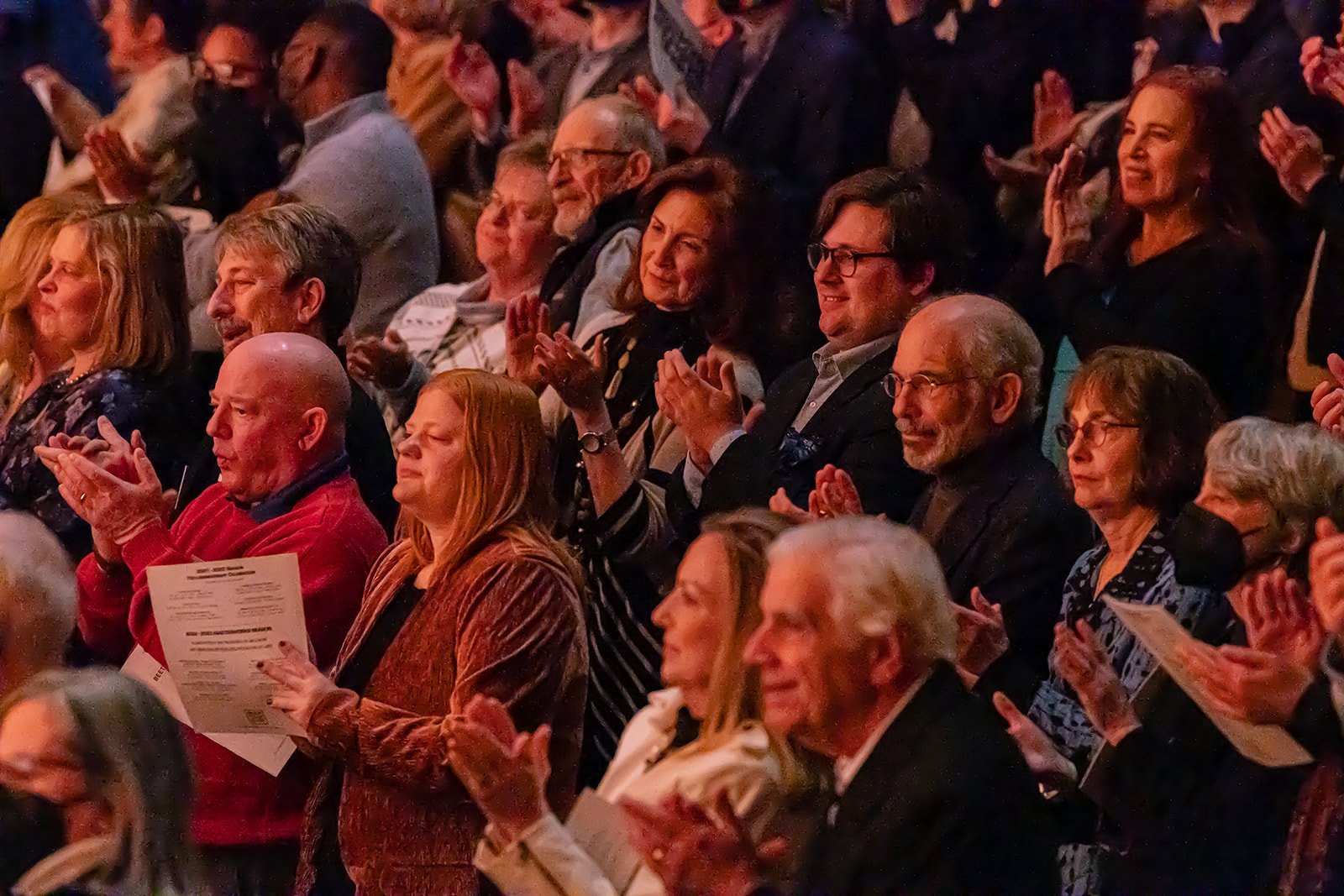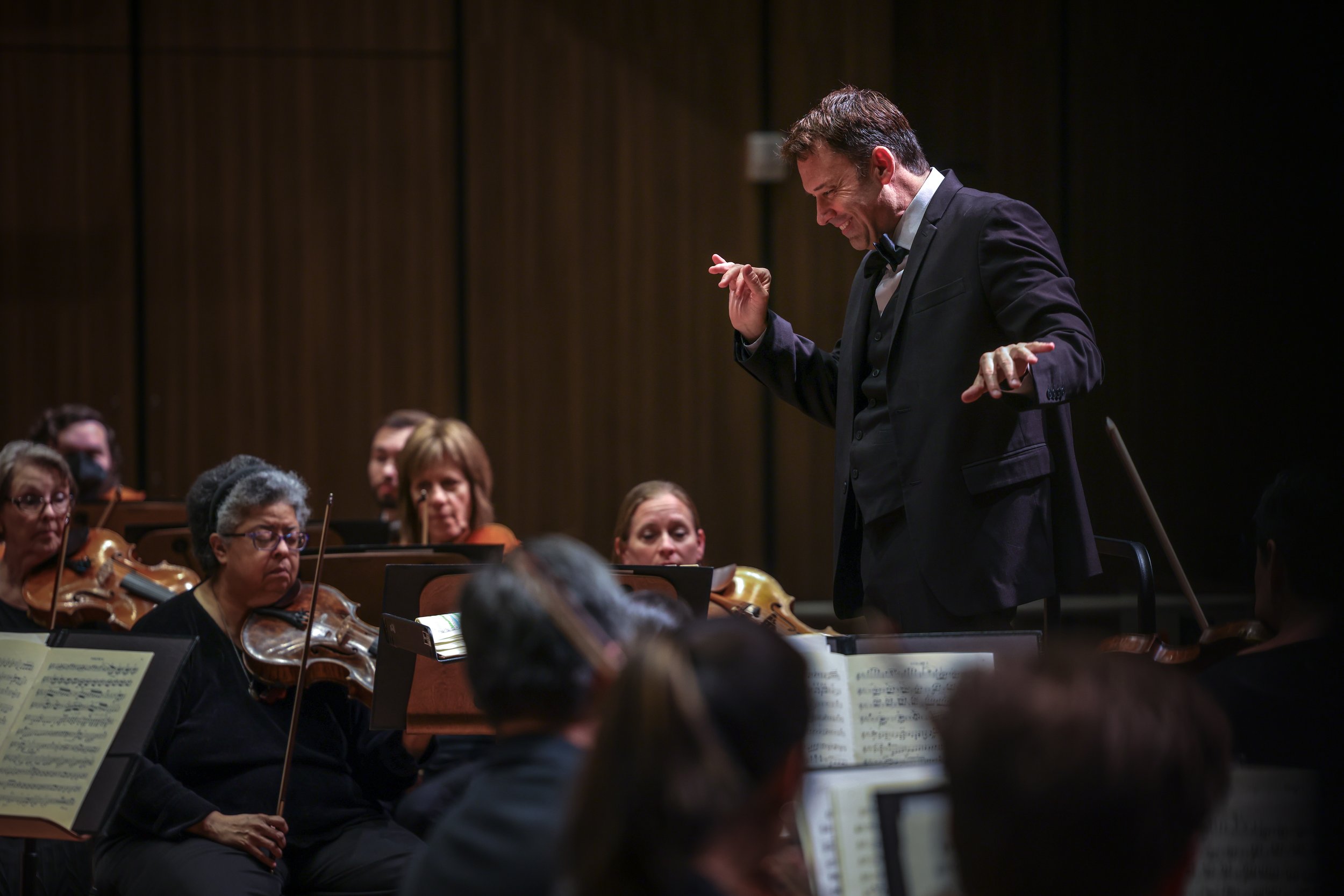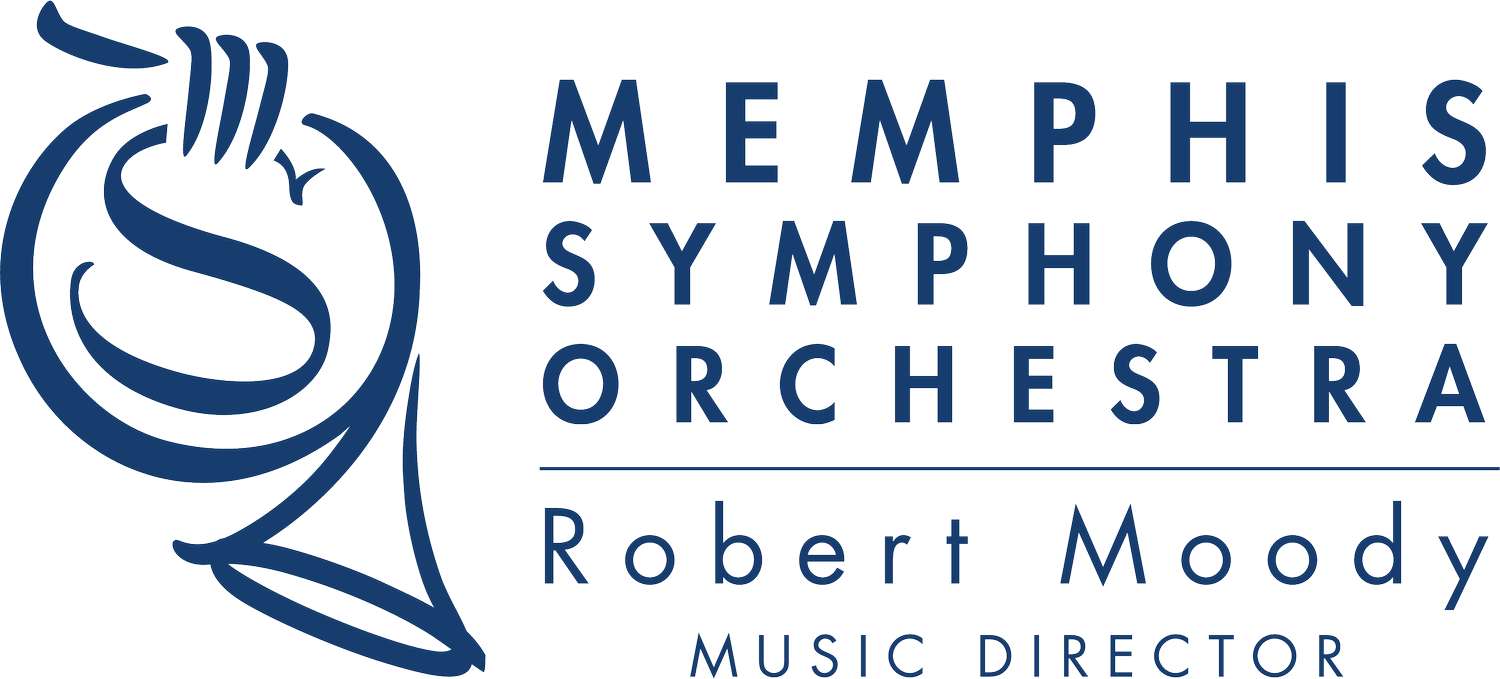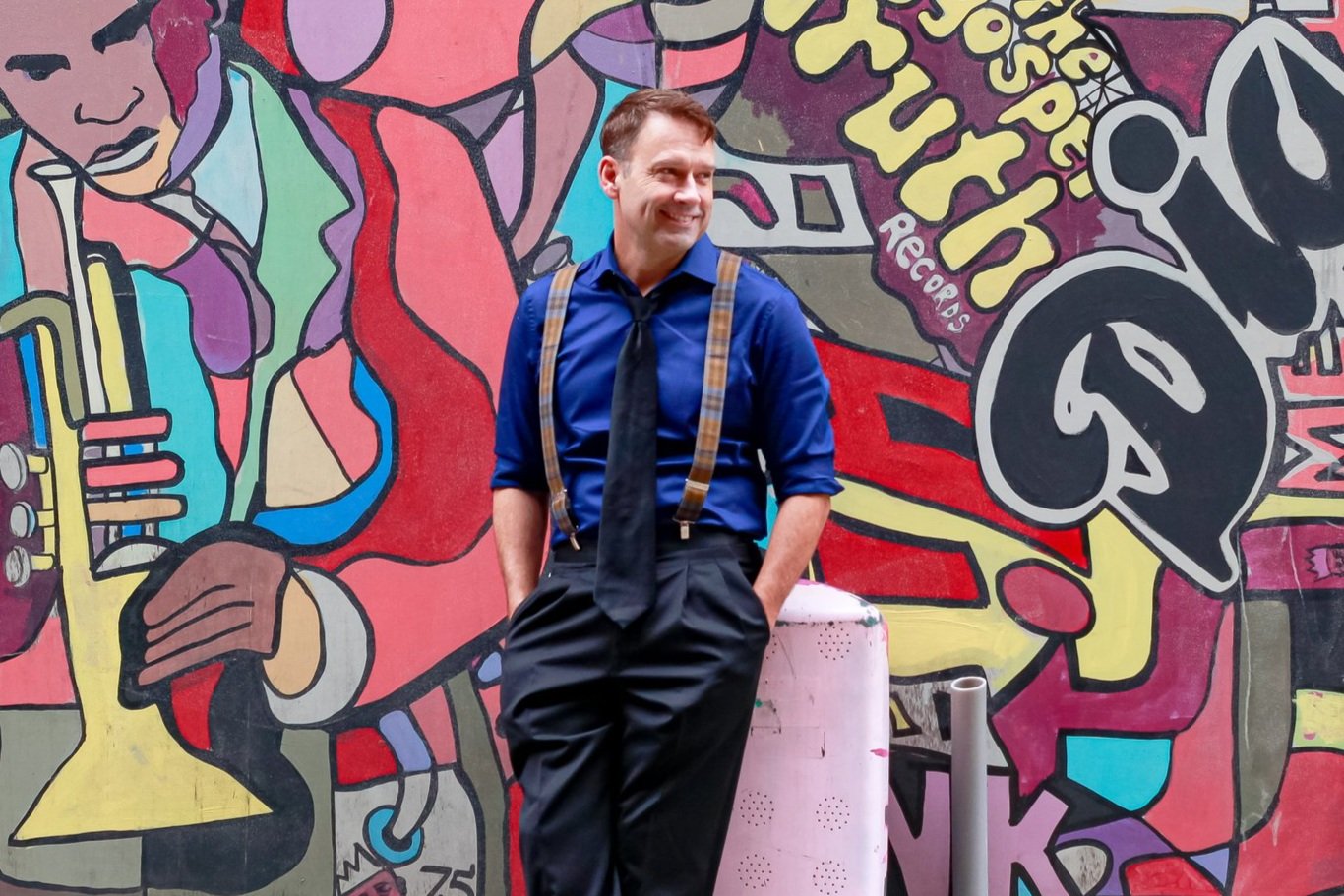MOODY CONDUCTS BEETHOVEN 5
PAUL AND LINNEA BERT CLASSIC ACCENTS SERIES
Friday, October 13, 2023, 6:30 p.m.
Crosstown Theater
Sunday, October 15, 2023, 2:30 p.m.
Scheidt Family Performing Arts Center
Robert Moody, conductor
Caroline Kinsey, horn
JESSIE MONTGOMERY
(b. 1981)
Banner for string quartet and string orchestra
DAN LAZARESCOU
(b. 1953)
Impressions from the Black Sea for Horn and Orchestra
I. Pontus Euxinus
II. The Bridge at Drobeta
III. Trials and Tribulations
IV. The Black Sea
Caroline Kinsey, horn
INTERMISSION
LUDWIG VAN BEETHOVEN
(1770 - 1827)
Symphony No. 5 in c-minor, op. 67
I. Allegro con brio
II. Andante con moto
III. Allegro
IV. Allegro
by Michelle Pellay-Walker
Program Notes
-
Banner (2014)
The bulk of the Program Notes have been provided by the composer (https://www.jessiemontgomery.com):
Banner is a tribute to the 200th Anniversary of the Star Spangled Banner, which was officially declared the American National Anthem in 1814 under the penmanship of Francis Scott Key. Scored for solo string quartet and string orchestra, Banner is a rhapsody on the theme of the Star Spangled Banner. Drawing on musical and historical sources from various world anthems and patriotic songs, I’ve made an attempt to answer the question: “What does an anthem for the 21st century sound like in today’s multi-cultural environment?”
In 2009, I was commissioned by the Providence String Quartet and Community MusicWorks to write Anthem: A tribute to the historical election of Barack Obama. In that piece I wove together the theme from the Star Spangled Banner with the commonly named Black National Anthem, Lift Every Voice and Sing, by James Weldon Johnson (which coincidentally share the exact same phrase structure). Banner picks up where Anthem left off by using a similar backbone source in its middle section, but expands further both in the amount of references, and also in the role play of the string quartet as the individual voice, working both with and against the larger community of the orchestra behind them. The structure is loosely based on traditional marching band form, where there are several strains (or contrasting sections), preceded by an introduction, and I have drawn on the drum line chorus as a source for the rhythmic underpinning in the finale. Within the same tradition, I have attempted to evoke the breathing of a large brass choir as it approaches the climax of the “trio” section. A variety of other cultural Anthems and American folk songs and popular idioms interact to form various textures in the finale section, contributing to a multi-layered fanfare.
The Star Spangled Banner is an ideal subject for exploration in contradictions. For most Americans the song represents a paradigm of liberty and solidarity against fierce odds, and for others it implies a contradiction between the ideals of freedom and the realities of injustice and oppression. As a culture, it is my opinion that we Americans are perpetually in search of ways to express and celebrate our ideals of freedom — a way to proclaim, “we’ve made it!” as if the very action of saying it aloud makes it so. And for many of our nation’s people, that was the case: Through work songs and spirituals, enslaved Africans promised themselves a way out, and built the nerve to endure the most abominable treatment for the promise of a free life. Immigrants from Europe, Central America and the Pacific have sought out a safe haven here, and though met with the trials of building a multi-cultured democracy, continue to find rooting in our nation, and make significant contributions to our cultural landscape. In 2014, a tribute to the U.S. National Anthem means acknowledging the contradictions, leaps and bounds, and milestones that allow us to celebrate and maintain the tradition of our ideals.
The scoring for this work consists of solo string quartet plus tutti strings.
-
Impressions from the Black Sea for Horn and Orchestra
The bulk of the Program Notes have been provided by the composer (https://danlazarescoumusic.com/):
Impressions from the Black Sea is a symphonic work of loose musical impressions of memories of the Black Sea. Called Pontos Axeinos (The Dark or Inhospitable Sea) by the ancient Greeks or, later, Pontus Euxinus (The Hospitable Sea) by the Romans, the Black Sea witnessed the tumultuous birth and history of the six modern countries which share today its shores: Romania to the northwest, Ukraine to the north, Russia and Georgia to the east, Turkey to the south and Bulgaria to the southwest.
The first movement, Pontus Euxinus, opens the work with impressions of a hospitable sea.
The Bridge at Drobeta, over the Danube, was built and crossed by the Roman legions Legio II Adjutrix recalled from the British Islands, Legio IV Flavia Felix recalled from Moesia Superior (modern Serbia), and a detachment of Legio VI Ferrata recalled from the Roman province of Judea. The Roman legions conquered Dacia (modern Romania) during the Dacian Wars, commemorated by the bas-reliefs of Trajan’s Column in the center of Rome.
Trials and Tribulations are inspired by two Romanian folk songs: Mocirita cu trifoi, a love song, and Cantec de catanie, an army drafting old song.
The last movement, The Black Sea, brings back polyphonically the previous musical themes. The memories of the welcoming sea conclude the Impressions from the Black Sea.
Scored for horn solo, woodwinds in pairs (plus piccolo), 3 each of trumpets and trombones, timpani, percussion, harp, and strings, the work is played mostly without pause, the only break occurring between Movements Two and Three.
-
Symphony No. 5 in C-Minor, Op. 67
First Performance: Theater an den Wien, Ludwig Van Beethoven (conductor): Vienna, December 1808
As a Music Appreciation instructor for over a quarter of a century, Beethoven’s groundbreaking “Fate” symphony has long been a favourite lecture topic of mine; I mean, are there any four notes in the history of music more famous than this work’s iconic opening?? Even military historians will recognise the three short notes followed by a long note as the three dots and a dash that represent V (for Victory) in Morse Code!! This four-note motive permeates the entire work, providing the glue that holds the piece together—sometimes it’s obvious; sometimes, not so much. But it’s always there, if you know what to listen for. Beethoven’s influence, as the bridge composer between music’s Classical and Romantic periods, cannot be overstated here, and in the 5th Symphony, many of his most important innovations are clearly on display as the work progresses.
The First Movement is a relatively straightforward sonata form, and includes primary, secondary, and closing themes. The four-note motive provides the basis for the main theme, and is used as an accompanying figure beneath the second theme. A couple of unusual features of the first movement include a cadenza-like oboe solo following the opening of the recapitulation, and an extended coda (closing section) that is equal in length to the previous exposition, development, and recapitulation sections (Beethoven became known for his lengthy codas, especially in his middle and late period compositions). The coda also introduces a new theme not previously heard in the movement.
The Second Movement is a theme-and-variations form featuring two important themes, not one. The lower strings really get the opportunity to shine here, with the violas and cellos carrying the melodic material of the first theme in its opening statement, along with variations one and two. The second theme starts in the clarinets, and is reiterated in the trumpets before a bridge takes us to the next variation in sequence. Remember our four-note motive?? You’ll hear it in the second theme, following the dotted figure pick-up. A quasi-development section featuring aspects of both themes occurs between variations two and three, with another rather lengthy coda to conclude the movement. Harmony nerds will rejoice at the reference to the first half of “La Folia” (harmony only, not the well-known Corelli melody—though it could, in fact, easily be layered over Beethoven’s material!!) that occurs near the end of the “development” section.
The Third Movement is a scherzo, rather than the Minuet and Trio one normally associates with earlier Classical period instrumental works. While this is normally a ternary (ABA) form movement, there is some evidence that Beethoven intended for the scherzo proper of the 5th Symphony to be repeated twice, as happens in symphonies Four, Six, and Seven, creating an ABABA structure (these performances will feature the standard ABA format). The two themes that comprise the scherzo are easily distinguishable one from the other: An arpeggiated figure played by the cellos and basses in pianissimo, followed by the full orchestra, led by the horns, in fortissimo. The second theme is created using the four-note motive (short-short-short-long) as its basis, making it impossible to confuse the two. The Trio in this instance is a rather boisterous fugue, starting in the lower strings, and working its way up through the full orchestra. Note that the return to the scherzo maintains its quietness throughout, rather than alternating the earlier dynamic contrasts, with the focus on the woodwinds, accompanied by pizzicato strings. Rather than ending, the movement enters a mysterious and hushed transition, based on the arpeggiated theme, that concludes with a huge crescendo into the Fourth Movement.
First things first: Let’s add some instruments to the orchestra!! In the Fourth Movement, Beethoven adds piccolo, contrabassoon, and three trombones, giving extra weight to both ends of the pitch spectrum (up until this point, the work has featured a typical Classical period instrumentation of woodwinds in pairs, two horns, two trumpets, timpani, and strings). It is a sonata form movement—but with stretch marks. We have our usual three themes, the second theme being where the four-note motive is strung together to create a melody; this theme will also be the basis of the development and the coda. Where things really go off the rails in terms of format is right before the recapitulation: Beethoven returns to the second theme of the THIRD MOVEMENT!! This begs the question: Is it a real return,…or has the earlier material simply been continuing along beneath the main body, and we just didn’t notice it until now?? The movement finishes with a gigantic coda that teases the listener with at least a half-dozen false endings before reaching its triumphant conclusion.
On Stage This Weekend
Get to know our conductor, special guest, and musicians for this weekend’s performances.
-
Internationally acclaimed conductor Robert Moody in currently enjoying his 17th season as Music Director of Arizona Musicfest and 8thseason as Music Director of The Memphis Symphony Orchestra (Tennessee). Under his artistic leadership, AZ Musicfest has become the premiere Winter Music Festival Orchestra in North America, boasting a roster comprised of players from the world’s greatest orchestras. The Memphis Symphony has enjoyed exponential growth in programming, recording, new commissions, and endowment growth to well over $25 Million dollars.
Prior to Memphis, Moody was music director for both the Portland Symphony (Maine) and the Winston-Salem Symphony (North Carolina). Earlier in his career, he held conducting positions with the Phoenix Symphony, Evansville Philharmonic, Santa Fe Opera, Brevard Music Center, Interschool Orchestras of New York City, and apprenticed at Landestheater Opera in Linz, Austria.
He has led many of the major orchestras and opera companies of the world, including Chicago Symphony, Los Angeles Philharmonic, Toronto Symphony, Dallas and Houston Symphonies, Minnesota Orchestra, Washington National Opera, Aachen and Baden Baden Symphony Orchestras in Germany, Orquesta Filarmonica de Bogotá (Colombia), and the Vienna Chamber Orchestra (Austria). He is a frequent guest conductor in South Africa, returning this season for the third time to conduct the three major orchestras there – Cape Town, Johannesburg, and KZN Philharmonic in Durban.
Click here for more information.
-
Caroline Kinsey, a native of San Antonio, TX, is Principal Horn with the Memphis Symphony Orchestra after 11 years as Principal Horn of the Arkansas Symphony, Little Rock, AR. She received her Bachelor of Music degree and Performer’s Certificate from the Eastman School of Music in 1990 and her Professional Studies Certificate from the Cleveland Institute of Music in 1993. Ms. Kinsey has toured throughout Europe and Japan, and has played and been a member of several orchestras across the United States including the Honolulu Symphony, the Corpus Christi Symphony, Pro Musica Chamber Orchestra (Columbus, OH), and the Canton (OH) Symphony Orchestra. Other orchestral appearances have been with the San Antonio Symphony, Nashville Symphony, Illinois Symphony, the National Repertory Orchestra, the Hawaii Opera Company, and the National Orchestral Institute.
In addition to orchestral playing, Ms. Kinsey has been a guest artist at several horn workshops and master classes in Arkansas and Texas. In August of 2004 she was invited to spend two weeks in Santa Cruz, Bolivia teaching and holding master classes to horn players at the local performing arts academy and air force bands.
Before coming to Memphis in 2005, Caroline was co-founder and principal horn of the Pinnacle Players Music Festival in Little Rock, AR as well as Music Librarian and Outreach Services Coordinator for the Arkansas Symphony. She was also Horn Instructor at the University of Mississippi “Ole Miss”, Horn Lecturer at the University of Central Arkansas, Ouachita Baptist University and The University of Arkansas at Monticello. Ms. Kinsey also held the positions of general manager and music librarian with the Memphis Youth Symphony Program.
Currently, in addition to the MSO, Caroline is Manager of Lukas Horns, a custom French
horn building business, Horn Mentor of the Hot Springs Music Festival and Sewanee
Summer Music Festival. She shares her life with her amazing family Dan Vidican and their 13 year old son, Lukas, their Boxer doggy, Clark and newest family members, kitties Clover, Tony and Isabella!
Ms. Kinsey plays exclusively on a Lukas Horn L Model.
Memphis Symphony Orchestra
Musicians on Stage
Violin I
Barrie Cooper, Concertmaster
The Joy Brown Wiener Chair
Marisa Polesky, Assistant Concertmaster
Diane Zelickman Cohen, Assistant Principal
Paul Turnbow, Assistant Principal
Wen-Yih Yu
Priscilla Tsai
Jordan Musgrave
Violin II
Gaylon Patterson, Principal
The Dunbar and Constance Abston Chair
Erin Kaste, Assistant Principal
Lenore McIntyre, Assistant Principal
Yennifer Correia
Edward Sanford
Sam Spurbeck
Jamie Weaver
Viola
Jennifer Puckett, Principal
The Corinne Falls Murrah Chair
Michelle Pellay-Walker, Assistant Principal
Aaron Tubergen, Assistant Principal
Beth Luscombe
Michael Brennan
Katie Brown
Cello
Ruth Valente Burgess, Principal
The Vincent de Frank Chair
Iren Zombor, Assistant Principal
Jonathan Kirkscey, Assistant Principal
Jeffrey Jurciukonis
Hannah Schmidt
Bass
Scott Best, Principal
Chris Butler, Assistant Principal
Sean O’Hara
Flute
Shantanique Moore, Principal
The Marion Dugdale McClure Chair
Delara Hashemi
Mari Kamikura
Oboe
Lani Kelly, Visiting Oboe
The Paul and Linnea Bert Chair
Saundra D’Amato, Principal
Clarinet
Andre Dyachenko, Principal
The Gayle S. Rose Chair
Rena Feller
Bassoon
Susanna Whitney, Principal
Michael Scott
Brianna Allen
Horn
Robert Patterson, Principal
The Morrie A. Moss Chair
Vincent Morreale, Assistant Principal
Trumpet
Scott Moore, Principal
The Smith & Nephew Chair
Susan Enger
Mike McKenzie
Trombone
Greg Luscombe, Principal
Wes Lebo
John McAllister
Timpani
Frank Shaffer, Principal
Percussion
David Carlisle, Principal
Ed Murray, Assistant Principal
Harp
Marian Shaffer, Principal
The Ruth Marie Moore Cobb Chair

DONORS
THANK YOU! Individuals, corporations, foundations, ArtsMemphis, the Tennessee Arts Commission, and others make annual contributions to support the Memphis Symphony Orchestra. The following community members have expressed their support for the Memphis Symphony Orchestra for 2022 and 2023.
$25,000+
AutoZone, Inc.
Paul and Linnea Bert
City of Memphis
The Estate of Adrienne D. Davis
FedEx Corporation
First Horizon Foundation
Dr. Suzanne Gronemeyer
Carolyn and Scott Heppel
Hyde Family Foundation
International Paper Foundation
Plough Foundation
The Estate of Mary Alice Quinn
Mr. and Mrs. Fredrick W. Smith
J. Richard and Carole M. Briscoe
John and Marsha Evans
Masanori and Seiko Igarashi
Frank and Jeanne Jemison
Dorothy Kirsch
Ann L. Powell
$10,000+
John and Ashley Remmers
Shelby County Government
The Arthur F. and Alice E. Adams
Charitable Foundation
Nancy Walker
The Estate of Patricia Walker
Joy Wiener
Rebecca and Spence Wilson
$5,000+
Bert and Carol Barnett
Jack and Kathleen Blair
Maria and Michael Douglass
James and Susan Edelman
David and Susan Ellison
Pam and Steve Guinn
Kemmons Wilson Family Foundation
Korones Family Foundation
Edwin Koshland
Robert and Mary Nell Kuhlo
Nathaniel Landau
Eva Lang and Scott LeMay
Dinah and Gary Makowsky
Elisa and Ramon Marus
Amy and Tony Milam
Rick and Carey Moore
Henry and Snowden Morgan
Linda and Ron Sklar
Paul Thomas
$2,500+
Fran and Peter Addicott
Louise and Will Barden
Stanley and Dot Bilsky
Judith Bookman
Paul Brezina
Arthur and Michelle Buring
Elizabeth and Charles Carter, Jr.
Copland Foundation
Farrell Calhoun, Inc.
Juan Fuentes
Jere Gerard
Lowry and Laura Howell
Donna Jefcoat
Dr. Carol Johnson-Dean
Christopher Knott-Craig
Ann and Dudley Langston
Elizabeth and Jerry Marshall
Montgomery and Laura Martin
Alan and Zoe Nadel
Robert Patterson and Patricia Gray
Laretha R. Sargent
Nick Sarraf
Stephen and Deborah Schadt
Jane and Bruce Smedley
John and Cristina Speer
Richard Tanner
Deborah Dunklin Tipton Charitable Fund
Otis and Marilane Warr
Betty and Jules Weiss
Barry and Cynthia A. White
Evelyn Wofford
$1,000+
Stephen Agar
Kay and Keith Anderson
Henry and Janet Bartosch
Reed Baskin and Alice Nishiwaki
Joey and Neal Beckford
Fiona and Lance Binder
Betty Blaylock
Peggy Bodine
Robert and Sheryl Bowen
Ray Brandon
Rose Merry Brown
Mary Beth and Tom Bryce
Paul and Suzanne Burgar
Alice Rawlins and Phil Burnett
Canale Foundation
Carol Lee and Joe Royer
Daniel Case
Irvine and Gloria Cherry
Karen Clawson
Charles and Nancy Coe
Carol Cummings
Gay Daughdrill Boyd
Mike and Blanche Deaderick
Dr. Margaret Debon
Dillard Door
Jim Dorman
JT Elliott
Eyleen Farmer
Jim and Susan Fletcher
Fred and Mary Lawrence Flinn
David Forell
Susan Frazee
Katherine and Jimmy Gould
Jerrold and Martha Graber
Kathy Hammond
Carolyn Chism Hardy
Larry Hardy
Page Henrion
Marisa and Paul Hess
Honeybird Foundation
Walter and Nancy Howell
Joanna Hwang
J. R. and Barbara Hyde
Eric and Cynthia Johnson
Rose and Thomas Johnston
Edith Kelly-Green
Ellen Klyce
Bruce and Susanne Landau
Barbara Lapides
Lucy and Tom Lee
Lauriann Lines
Al and Janet Lyons
Barbara McConville
John and Michelle McKissack
Lisa & Maurice Mendel
Rodgers Menzies
Irma W. Merrill
Rozlyn Nichols
William and Barbara Nixon
Cecile and Frederick Nowak
Nancy Otto
Marianne Parrs
Rushton Patterson
John Pickens
Kenneth Prince
Eileen and Joel Prout
Linda Rhea
Neil and Judy Ringel
Betty Robinson
Rose Montgomery Johnston Family Foundation
Gayle Rose
Diane Rudner
Beverly and Ken Sakauye
Craig and Andrea Sander
Dale Schaefer
Samuel and Leanne Scull
Mary Seratt
Patricia Seubert
Jerry Sharp
Cynthia Spangler and Charles Askew
Richard and Trish Spore
Mary Anne K. Sullivan
Irvin Tankersley
Lura and Steve Turner
Michael and Andie Uiberall
Susan Van Dyck and James Newcomb
Bill and Carmine Vaughan
Dr. Lee and Mary Linda Wardlaw
Graham and Megan Warr
Benton Wheeler and Aimee M. Christian
Alvin and Myra Whitney
Linda Wible
Camilla Wilson
Mary Wurtzburger
Susan Yount
Lyn and Gordon Yukon
Dennis Zolper
This list recognizes philanthropic contributors to the MSO made between July 1, 2022 - June 30, 2023 . While compiling this list every effort has been made to reflect the accuracy of our donors. If your name has been misspelled, omitted, or misrepresented please contact us at 901-537-2500 and will correct our records. We appreciate your generosity and understanding.







